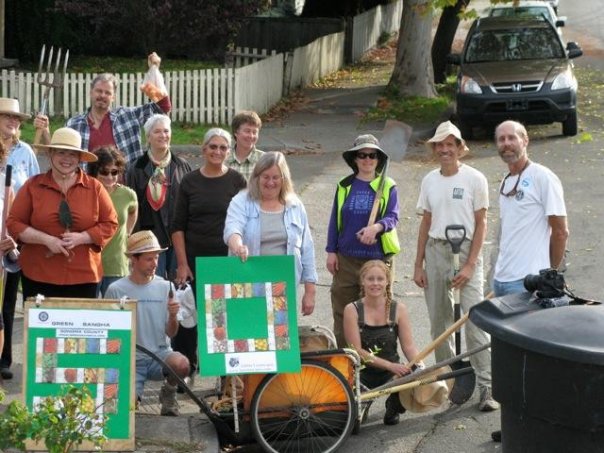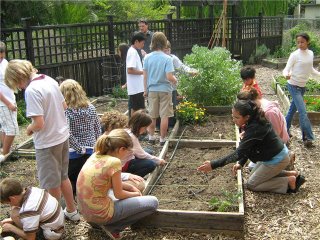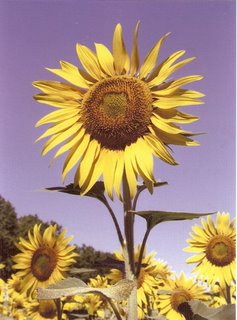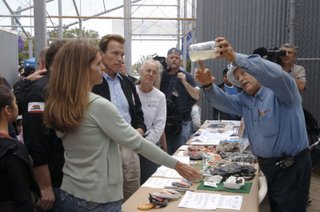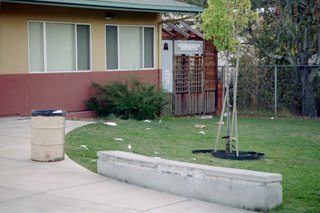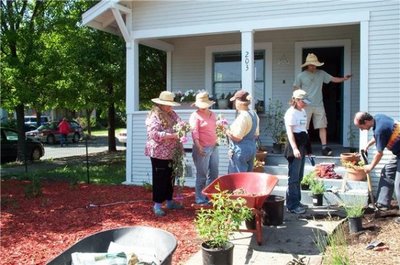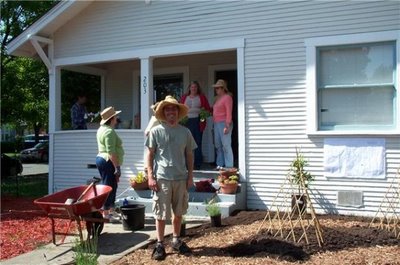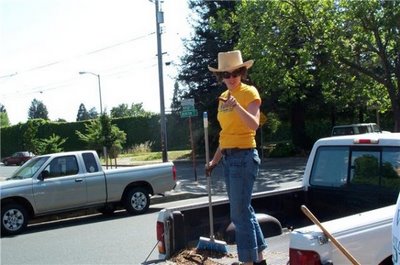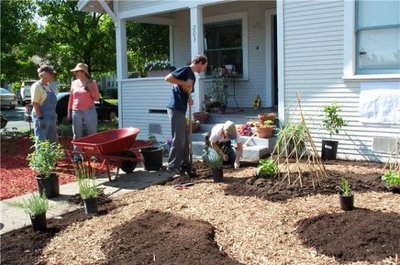Organizers of Climate Justice Fast have issued an invitation for those concerned about climate change to engage in 1 additional day of fasting on Thursday, December 17. I am joining them. In my RSVP to the invitation, I have mentioned my membership in Green Sangha, which has inspired me to work more consistently for environmental justice-you can see my posting at the Climate Justice Fast web page-“about us”, under the U.S. flag: http://climatejusticefast.com/pages/debra-birkinshaw/. Several Green Sangha Sonoma County chapter members have joined me in this action, in solidarity with over 1,000 Climate Justice Fast activists who are holding press conferences in Copenhagen.
Author Archives: debra
Green Sangha Sonoma County Joins Climate Justice Fast
Tomorrow, December 7, is the first day of the Copenhagen climate talks. After reading about Climate Justice Fast, I organized a 12 hour fast for this day, in solidarity with activists from 23 other countries that are fasting for this cause. Several Green Sangha Sonoma County chapter members are joining me. We are donating the equivalent of what we would normally eat during the day to the Redwood Empire Food Bank, to call attention to the link between climate change, drought and famine world-wide. Here is a video that tells the story: Climate Justice Fast
Visit the link to the Climate Justice Fast Website. Our local action is listed under the United States flag as “Sonoma County Community Fast” : http://www.climatejusticefast.com/about-us/

Symbol for the United Global Action Calling for Climate Justice
Song of the Builders
Song of the Builders
On a summer morning
I sat down
on a hillside
to think about God –
a worthy pastime.
Near me, I saw
a single cricket;
it was moving the grains of the hillside
this way and that way.
How great was its energy,
how humble its effort.
Let us hope
it will always be like this,
each of us going on
in our inexplicable ways
building the universe.
Mary Oliver
27 members of Green Sangha Sonoma County played their own part in building the universe on October 24th, the 350.org global call for action on climate protection measures. We joined hearts, minds and hands together to till the earth, to enrich the soil, and plant vegetables. We have planted hope, nourished friendships, and initiated the building of community.
Several of our chapter members are joining the organization Climate Action Fast in their effort to awaken everyone to the necessity for climate protection measures. Our part is to fast on December 7, the first day of the Copenhagen talks, from 7 AM to 7 PM. We have pledged to donate the equivalent of what we would normally eat that day to our local food bank. The purpose of this action is to call attention to the plight of those who suffer drought and famine throughout the world, due to climate change. We have invited several local leaders to join in this day of action, to bring awareness of the Copenhagen talks and to garner legislative support for strident targets to reduce CO2 to under 350 ppm.
On December 12, several members of our chapter will attend a planning meeting on local food production organized by Transition Sebastopol. Members living in West County will support the ongoing efforts in Sebastopol and Cotati, while members living in Central County will collaborate with other sustainability-oriented organizations to create a Transition City initiative in Santa Rosa. The Transition Town movement has as its goal to build resilience in preparation for the post-carbon era.
Our focus in the ongoing work with the Garden Wheel project will be on healthy, local and accessible food production, which is a part of all Transition Town initiatives. Wendy Krupnick, instructor in the Sustainable Horticulture program at SRJC, aptly calls the series of Garden Wheels we hope to establish in different neighborhoods, “less like wheels-more like gears set in motion.” She offered to help us connect with the “I Grow” county program through the Sonoma County Health Services department.
Together we move more “grains of the hillside” than we would be able to do alone. Sangha is community, and community contains its own joyful power.
Loaves and Fishes
This is not the age of information.
This is not
the age of information.
Forget the news,
and the radio,
and the blurred screen.
This is the time
of loaves
and fishes.
People are hungry,
and one good word is bread
for a thousand.
~ David Whyte ~ from The House of Belonging
The pilot project garden in the Santa Rosa Junior College neighborhood is thriving. Green Sangha Sonoma County met for retreat today and tasted the fruits of our labors. It feels so right to plant, tend, and harvest local organic food right in our own community, rather than depending so heavily on produce transported by polluting vehicles.
Of the Green Sangha Sonoma County Garden Wheel Project, Joanna Macy has this to say:
Dear Debra,
Thank you for sending this inspiring report of the Garden Wheel Project.
What a beautiful example of the Great Turning in action. I love to think of the lives it touches and the connections it weaves!Warmly,
Joanna
Our Sangha is aligning with 350.org to launch our Green Sangha Sonoma County Garden Wheel project on October 24. As many ecological activists know, “350” is the magic number used to empower our legislators to act on climate protection. No more than 350 parts per million of carbon in our atmosphere will sustain a planet “similar to the one on which civilization developed and to which life on earth is adapted,” according to Bill McKibben of 350.org. Yet scientists report that through non-sustainable practices, we have exceeded this number-the latest report indicates that there are 399 parts per million of carbon in the atmosphere.
Bill McKibben will be speaking in Santa Rosa the evening of October 2 at Sonoma Country Day School, Jackson Theatre. This will be the kick-off event which propels us into joining 80 other countries to create a global day of action in preparation for the upcoming Climate Conference in Copenhagen in December.
We will have our retreat on the October 24 day of action, and plant the first of four edible landscapes that will benefit neighborhood food exchange and food donations at FISH, (Friends In Service Here) Food Pantry in Santa Rosa which provides 24-hr. emergency supply of food to hungry people, no questions asked. The days of creating miracles, with loaves and fishes, (tomatoes, lettuce and apples…) has arrived.
During our retreat today, our letter action revolved around inviting our federal, state and local legislators to both of the events planned in Sonoma County. Our mission is to invite our leaders to join us in supporting the decisions that come out of Copenhagen, and to be a part in actualizing real climate protection initiatives in our county.
This is like a final exam for human beings. Can we muster the courage, the commitment, and the creativity to set this earth on a steady course before it’s too late? October 24 will be the joyful, powerful day when we prove it’s possible. Bill McKibben, www.350.org
Gardening Our Way To Paradise
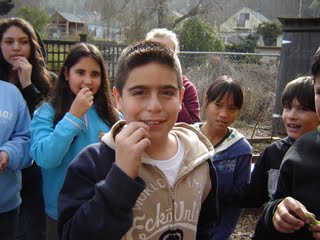
The aim of the program is to create a Garden where students can learn about the natural world, nurture living things, and reap the earth’s bounty. Although the Garden began within a circumscribed space, we find the boundaries transparent and often illusory. The Garden keeps slowly expanding into surrounding areas as we remove invasive weeds on the outskirts and infuse an ever richer variety of herbs, flowers, and shrubs.
The last school year, 2008-09, was especially busy and fruitful. The year ended with a climax when the 8th grade class donated $500 toward the purchase of fruit trees to go behind the Woodshop in a long-wished-for Haven.
If you have ever stopped by Davidson, you may recall how weed-infested the entry had been, even one year ago:
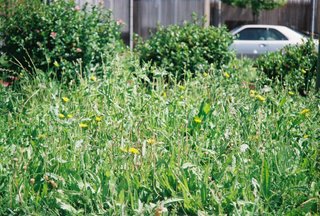
Then, the Davidson Dads organized a major overhaul, including upgrading and making more water-efficient the irrigation system, and installling a lawn by the office. The Conservation Corps joined in with great energy:
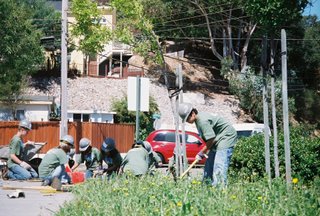 The smiles on their faces indicate the satisfaction they felt by making such a difference in the appearance of the school’s entry:
The smiles on their faces indicate the satisfaction they felt by making such a difference in the appearance of the school’s entry:
Classes in the Garden
* After occasional visits to the Garden in the fall, 6th grade science classes had a series of lessons this spring led by Next Generation garden educator Marijanna Shurtz. Teachers Bob Olson-Brown and Therese Hopkins helped their students plant seeds in their classrooms; many of those seeds are now thriving in the Garden.
* Kimberly Pearson brought her 12 SDC students to the Garden all spring, as often as four days a week. They explored, planted, and tended the growing crops of spring.
* Josh Powell held drawing classes in the Garden to enliven his students’ palette of possibilities.
* Laura Edelen shared Poetry in the Garden with her 6th grade Core classes. This is the third year in which the Garden has been used as a place of poetic inspiration.
Habitat Restoration
The Conservation Corps has cut great swaths of broom, fennel, and cottoneaster out of the Side Garden/Riparian Zone. We have yet to subdue the English ivy and pampas grass. Now, the Bay Institute has taken interest in our Riparian Zone, and has proposed a grant to complete the removal of invasives, plant native shrubs and trees (including some to shade the Band Room, reducing energy costs and carbon emissions), and possibly even restore stream flow by re-connecting to the original slough. Whatever measure of these dreams we realize, we’ll see a visible improvement to the look of this still too-desolate area of campus:
Litter
The proliferation of plastic litter on campus — by students, sports groups, and passersby — is the antithesis of everything the Garden is about. This year a team of students, parents, and staff worked together to move the campus closer to Zero Litter and Zero Waste. On October 10, Algalita Marine researchers Anna Cummins and Marcus Eriksen spoke to the assembled student body and showed pictures, videos, and actual relics from their travels across the Pacific Ocean to Hawaii. One of their exhibits consisted of plastic particles pulled out of the ocean by a surface trawl, just like the ones being shown by Algalita captain Charles Moore to our Governor and his wife:
Conservative estimates in 2003 put the amount of plastic trash floating in the North Pacific Gyre at 3 million tons. Eighty percent of that litter comes from land-based sources. Anna and Marcus made that point vivid for our students. To follow up, this spring the DMS Science department hosted the San Rafael Clean slide show on How Litter Hurts in every science classroom. The students saw images of the growing mountains of plastic trash that are invading our soil and water.
They learned, too, about the devastating effect of this litter on wildlife, such as the entanglement and starvation of an estimated one million seabirds every year.
I was impressed by how many students seemed to resonate with the message of reducing litter and reducing waste. Two boys came up after one presentation to describe how they had personally helped extract wildlife — one, a seabird, the other, a baby seal — from plastic tangles.
We are not done with this project, but progress has been made. When I showed pictures of Davidson litter spots from Sep 06, such as the one below, very few of the students said they had seen it look that trashed this year.
We were especially fortunate to have Claire Brosnan, Sami Mericle, and Linnea Schurig as student representatives on the Committee to End Litter. We will miss them next year, but know that they will continue their work in community improvement at San Rafael High.
Enrichment for the Garden-minded
Two films came to my family’s attention this summer. Each tells a vivid tale of our relationship with nature and ourselves:
1. Food, Inc. Cinematically gorgeous, this film shows how industrialized agriculture has overtaken our economy, and the high costs we are paying for “cheap” food. The film will confirm every gardener’s instinct that you have, and may spur even further rethinking of your purchasing habits. You may also be inspired to start saving your bean seeds for the next year’s planting.
2. A Man Named Pearl. An unlikely title for an equally unlikely topic, topiary! This film chronicles the dedication of a man who, by transforming his property with breathtaking topiary, created a place of unusual beauty, improved racial relations in his southern town, and became an inspirational figure to young and old. We rented this film from Netflix, and it’s likely available elsewhere.
The Wheel Just Keeps On Turning
By Debra Birkinshaw
(See photos of the garden planting below.)
JoAnna Macy says of the Great Turning, “It is a name for the transition from the industrial growth society to a life-sustaining society. It identifies the shift from a self-destroying political economy to one in harmony with Earth and enduring for the future. It unites and includes all the actions being taken to honor and preserve life on Earth…Now, in this very time, three rivers — anguish for our world, scientific breakthroughs, and ancestral teachings — flow together. From the confluence of these rivers we drink and awaken to what we once knew: we are alive in a living Earth, source of all we are and know. Despite centuries of mechanistic conditioning, we want to name, once again, this world as holy.”
There is a grand yet attainable project going on in our county that is a part of this Great Turning, as in the turning over of soil, the turning of thirsty lawns into edible Edens, and the turning toward transition in our community. A collaborative project of Green Sangha Sonoma County, SRJC Neighbors For Sustainability, and Edible Landscapes, the Garden Wheel Project incorporates the teaching of permaculture principles with hands-on gardening, food exchange, and food donation.
The Garden Wheel Project is already building connections, community, and increased neighborhood food security by bringing neighbors together to install food-focused gardens on at least four JC Neighborhood residential properties. The gardens will emphasize neighborhood food production, low water use techniques, and plants that attract beneficial insects, birds, and other beneficial wildlife to the area.
Garden Wheel participants are working to secure initial funding through a CAB, (Community Advisory Board) Community Improvement grant. Funding for the replacement of thirsty lawns with low-water-use plants and/or permeable landscape materials, such as mulch and bark, is also available through a Green Exchange Rebate Program offered by the City of Santa Rosa.
The gardens will be replicable models for neighborhood food production in our county, and designs and plant choices will produce as diverse a harvest as possible, which will facilitate trading. Surplus from the gardens can be traded at the JC Neighborhood produce swaps, (launching in July 2009) and donated to FISH, a neighborhood organization that provides food to people who need it. There is a vision to include some school gardens in the future, to safeguard this practice for future generations.
As the coordinator for the Stewardship of the Earth project, part of the New Social Contract being revived at our Peace and Justice Center, I want to draw for our readers the connection between peace and justice work and this project. There can be no peace without sustainability. We work together to assure our community that there is an abundant flow of resources locally; therefore, there is no need to panic, take up arms, and invade other countries in search of plunder. It is time to turn over a new leaf.

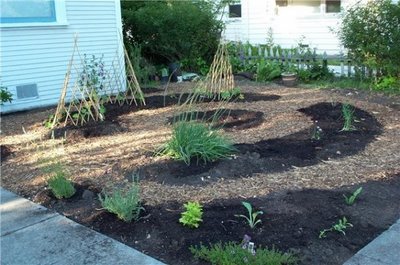 Planting is under way. There are many edibles in this garden now-oregano, thyme, basil, dill, cilantro, rosemary, sweet potatoes, beans, peas and tomatoes. There are also raspberries, a lemon verbena, and an aloe plant. I want to plant edamame for some more protein.
Planting is under way. There are many edibles in this garden now-oregano, thyme, basil, dill, cilantro, rosemary, sweet potatoes, beans, peas and tomatoes. There are also raspberries, a lemon verbena, and an aloe plant. I want to plant edamame for some more protein.
*****
Debra Birkinshaw is a board member of the Peace and Justice Center of Sonoma County and an organizer for Green Sangha Sonoma County. To get involved in the Garden Wheel Project, you can email her at: cognizant2@hotmail.com.

